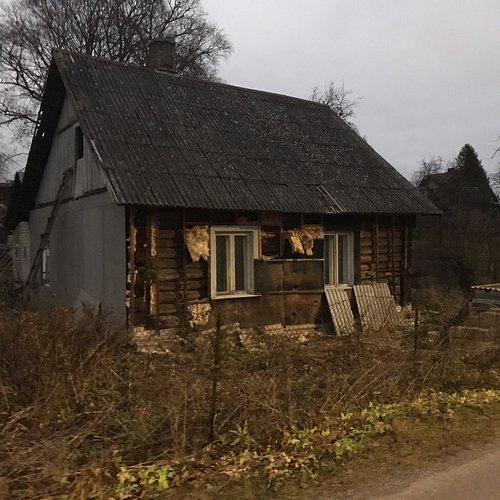Things to do in Valga, Valga County: The Best Sights & Landmarks
Discover the best top things to do in Valga, Estonia including Memorial Tablet of the Northern Sons of Finland, Valga Town Hall, Roman Catholic Church of the Holy Spirit, Monument to Alfred Neuland, Nipernaadi, Valga Prison Camp Cemetery, Valga St. John's Church, Paju Battle Memorial.
Restaurants in Valga
1. Memorial Tablet of the Northern Sons of Finland
Overall Ratings
5.0 based on 2 reviews
A black granite memorial tablet bearing almost 200 names was installed on the wall of the Valga Jaani (St John’s) Church in 1934 in remembrance of the Finnish volunteers who fell in the Paju Battle of the War of Independence. The polar bear sign of the Northern Sons Regiment is shown on the shield above the stone. In 1940 the memorial tablet was demolished with pickaxes by the order of communists. The memorial tablet was reopened on the 80th anniversary of the Paju Battle in 1999.Interesting facts:* the memorial tablet was opened in 1934 by President Konstantin Pats;* the first table was made in Finland and the second one in Tartu;* donations for the second tablet were collected by Ylistaro Rural Municipality (Finland) at the initiative of Ossi Salo.
2. Valga Town Hall
Overall Ratings
4.5 based on 11 reviews
The Town Hall was built in 1865 and its high half-hipped roof, skylights and turrets make it one of the most outstanding examples of historicist architecture in Estonia. There is a memorial tablet to Johannes Martson, who was the mayor from 1902 to 1917, in the foyer of the Town Hall.Interesting facts:* Johannes was the first Estonian mayor in Estonia and his wax figure can be seen in Valga Museum;* Valga Tourist Information Centre is located in the Town Hall.
3. Roman Catholic Church of the Holy Spirit
Overall Ratings
4.5 based on 3 reviews
The church was built of natural stone and bricks in 1907. Lithuanian and Polish railway workers were actively involved in building the church. The church operated until 1940 and from 1945, the building was used as a warehouse and later as a gym.The extension of the church was built in 1995 and the church was renovated.Interesting facts:* the church does not have a tower as the imperial government of Russia refused to give permission to build one.
4. Monument to Alfred Neuland
Overall Ratings
4.5 based on 6 reviews
Weightlifter Alfred Neuland (1895-1966) who was born in Valga is the first Estonian Olympic Champion. He returned with a gold medal from the Antwerp Olympic Games in 1920. He was also successful at the Paris Olympic Games where he won the silver medal.Interesting facts:* sculptor Mati Karmin is the author of the bronze bust;* Hermann Lerchenbaum, the first Estonian known to have taken part in Olympic Games as a member of the US Navy's rowing team at the 1896 Olympic Games in Athens, was also born in Valga.
5. Nipernaadi
Overall Ratings
4.5 based on 7 reviews
NIPERNAADI, the eternal wanderer and dreamer, greets visitors and boldly raises his hat in the Sade park. Look at the sole of his raised travelling boot and you'll see adventurous roads awaiting for you. If you manage to polish even the smallest part of it you will always have good luck accompanying your travels. Look into his eyes and you'll start dreaming, too. If you happen to meet his eyes for a bit longer your longing will be filled with something beautiful and unusual. Wave him as you leave and adventures will follow.NIPERNAADI, a vigorous bronze sculpture inspired by the protagonist of the novel "Toomas Nipernaadi" by August Gailit is anxious to meet you.
6. Valga Prison Camp Cemetery
Overall Ratings
4.5 based on 6 reviews
During the Second World War, there was a camp for prisoners of war in the territory of the current Priimets Industrial Estate where the former stables of the Estonian Army had been converted into prisons. The Stalag 351 Camp was founded in summer 1941 for captured soldiers fighting in the Red Army and Camp 187 for German prisoners of war was founded instead of it in 1944. Interesting facts:* the cemetery where German prisoners of war are buried was restored at the initiative of the Volksbund Deutsche Kriegsgraberfursorge (People’s Association for Caring for German War Graves); * German prisoners of war built the Valga railway station that was completed in 1949;* the Mourning monument by Anton Starkopf was erected to commemorate Soviet prisoners of war.
7. Valga St. John's Church
8. Paju Battle Memorial
One of the most important battles of the War of Independence took place near the Paju Manor on 31 January 1919. The Northern Sons Regiment that consisted of Finnish volunteers also fought for the independence of Estonia over here. The most legendary commander in the War of Independence, Lieutenant Julius Kuperjanov, was fatally injured in the battle. The battle memorial is a granite pillar on a three-level pyramid, which was reopened on the 75th anniversary of the battle on 30 January 1994.Interesting facts:* the memorial was opened by President of the Republic of Estonia Lennart Meri;* a memorial tablet to the Northern Sons who fell in the battle can be found on the wall of the Valga Jaani (St John’s) Church.








